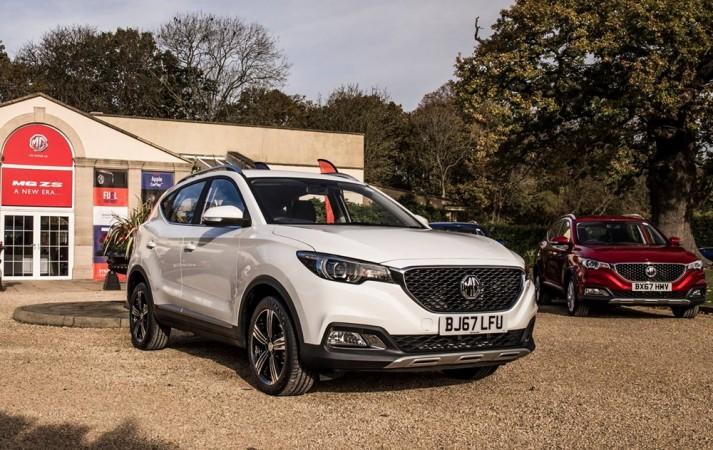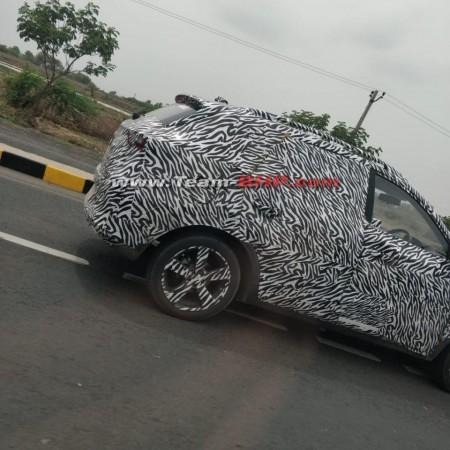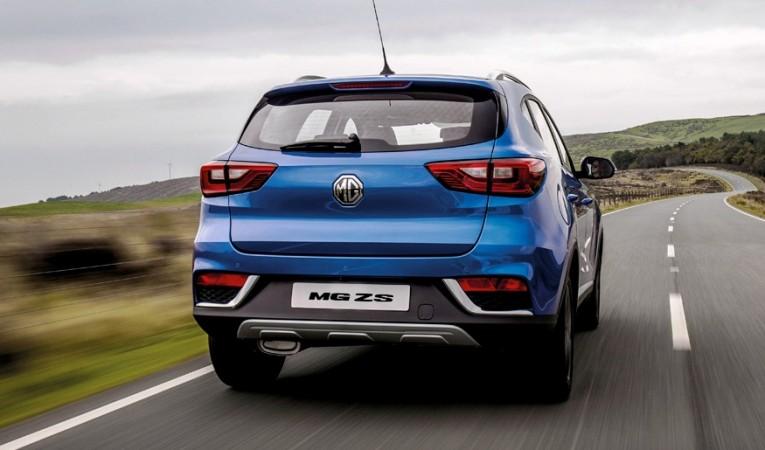
MG Motor, the British car brand owned by Chinese multinational auto manufacturer SAIC has confirmed India entry in 2019. The company has also confirmed that its first product will be a premium SUV that is expected to pose challenges to Hyundai Creta.
MG Motor India believed to be working on many SUV options from its international portfolio that include rebadged Baojun 530 SUV, MG RX5 and MG ZS. The former two models have already been spotted while testing in India and now a unit of the MG ZS has also been spotted in Gujarat.

Though the test vehicle is fully camouflaged it comes with a raked rear windshield, a roof spoiler and wraparound taillights. The roof rails, a shark fin antenna and 5-spoke alloy wheels confirm it is MG ZS SUV.
The MG ZS was announced in 2016, at the Guangzhou Auto Show and it has been launched in the Chinese market in March 2017. MG Motor claims the ZS is targeting young buyers and the SUV features latest design language characterised as Emotional Dynamism. The Z in the name symbolizes Generation Z, its target audience.
The MG ZS is loaded with European-style seat covers, 8-inch high-definition display screen, a 1.19 square meters panorama glass sunroof, long wheelbase and roomy interior. The SUV is powered by petrol engines only for now. The 1.5L VTI-Tech NSE Plus engine develops 120PS and 150Nm torque while the 1.0L turbocharged three-cylinder engine, developed by SAIC in conjunction with General Motors develops 125PS and 175Nm torque. When it comes to India, a diesel engine option is also expected.

MG Motor India
MG Motor India kick-started its India innings by taking over the manufacturing plant in Halol, Gujarat, from General Motors India in September 2017. Spread over an area of 170 acres, the plant will be revamped completely by MG Motor by 2019 with an initial investment of Rs 2,000 crore. The plant will have the capacity to produce 80,000 vehicles a year in the first phase.












![India Auto Roundup: Maruti Suzuki, Mahindra have exciting launches in November [details here]](https://data1.ibtimes.co.in/en/full/805520/india-auto-roundup-maruti-suzuki-mahindra-have-exciting-launches-november-details-here.jpg?w=220&h=135)